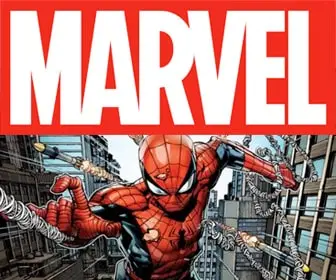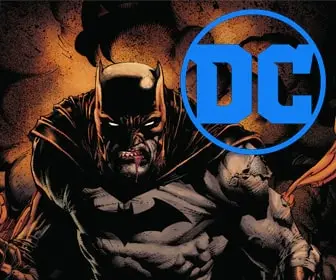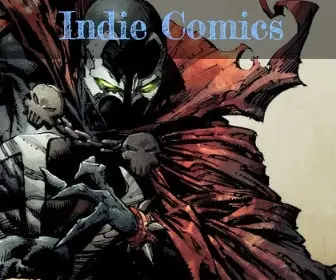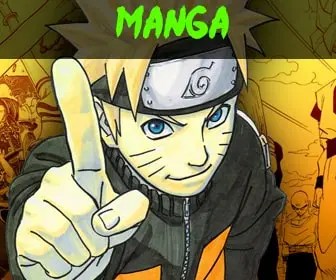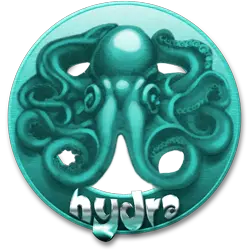
Marvel’s Powerhouse Duo: Exploring the Creative Journey of Stan Lee and Jack Kirby
In the vast landscape of comic book history, few partnerships have left as indelible a mark as that of Stan Lee and Jack Kirby. As the creative forces behind Marvel Comics during its transformative years, Lee and Kirby revolutionized the industry, introducing iconic characters and captivating storylines that continue to resonate with audiences today. This blog delves into the extraordinary collaboration between these two visionary creators, tracing their creative journey from the early days of Marvel to the creation of legendary superheroes like Spider-Man, the Fantastic Four, the X-Men, and more. Join us as we embark on a thrilling exploration of the remarkable work and enduring legacy of Marvel’s powerhouse duo, Stan Lee and Jack Kirby.
Creative Partnership

Stan Lee and Jack Kirby’s collaborative partnership was a true creative powerhouse that revolutionized the comic book industry. Together, they forged a dynamic synergy, combining Lee’s innovative storytelling and Kirby’s unparalleled artistic vision. Their collaboration spanned over two decades, beginning in the early 1960s when they co-created some of Marvel’s most iconic superheroes and teams.
Lee and Kirby’s partnership brought forth a new era in comic book storytelling. They shattered conventions by introducing flawed, relatable characters who grappled with personal struggles alongside their superheroic feats. Their collaboration birthed legendary characters such as the Fantastic Four, the Incredible Hulk, Thor, the X-Men, and many others who became the foundation of the Marvel Universe.
What set Lee and Kirby apart was their ability to push boundaries and infuse their work with a sense of depth and complexity. Lee’s dynamic scripts blended wit, drama, and social commentary, while Kirby’s bold and dynamic artwork gave life to their vivid imaginations. Their combined efforts propelled Marvel Comics to new heights and set a new standard for the industry.

Throughout their partnership, Lee and Kirby’s creative energy fueled one another, each pushing the other to greater heights of innovation. Their collaboration extended beyond the pages of comics, as they crafted intricate storylines and built a shared universe that captivated readers and laid the groundwork for future generations of comic book creators.
In the realm of comic book history, the collaboration between Stan Lee and Jack Kirby remains unparalleled. Their partnership left an indelible mark, shaping the landscape of superheroes and storytelling. Their work continues to inspire and captivate audiences, serving as a testament to their extraordinary creative synergy and lasting legacy in the comic book industry.
Stan Lee
Stan Lee, born Stanley Martin Lieber on December 28, 1922, in New York City, was an American comic book writer, editor, and publisher. He is best known as the co-creator of numerous iconic superheroes and for his pivotal role in shaping the Marvel Universe. Lee began his career in the comic book industry in 1939, working as an assistant at Timely Comics, which would later evolve into Marvel Comics.
Jack Kirby
Jack Kirby, born Jacob Kurtzberg on August 28, 1917, in New York City. Kirby’s career in comics began in the 1930s, working for various publishers and honing his distinctive art style.
Known as the “King of Comics,” Kirby’s contributions extended far beyond his artistic talents. He had an unmatched imagination, crafting epic storylines and cosmic sagas that pushed the boundaries of the medium. His concepts and designs set the stage for the Marvel Universe and left an indelible mark on the industry.
Unique Paths
Jack Kirby and Stan Lee both had unique paths that led them to enter the comic book industry, eventually culminating in their legendary partnership at Marvel Comics.
Jack Kirby, born Jacob Kurtzberg, grew up in the tough streets of New York City. From an early age, he showed a passion for drawing, honing his artistic skills through self-study and endless practice. Kirby’s talent quickly became apparent, and he began working as an inker and pencil artist for various publishers in the 1930s. His early works spanned different genres, including adventure, romance, and crime comics. Kirby’s experience in these diverse genres helped shape his storytelling abilities and versatility as an artist.
On the other hand, Stan Lee, born Stanley Martin Lieber, had a different entry into the comic book industry. As a teenager, Lee started working at Timely Comics (later renamed Marvel Comics), where he initially served as an office assistant. Lee’s uncle, who was a publisher at the time, helped him secure the position. Despite starting in a more administrative role, Lee’s creative instincts and love for storytelling led him to become an editor and writer for the company.
Kirby and Lee’s paths eventually crossed in the 1960s at Marvel Comics. The duo began collaborating on a series of superhero titles that would revolutionize the industry and lay the foundation for the Marvel Universe as we know it today. Their partnership proved to be a perfect synergy of Kirby’s dynamic artwork and imaginative storytelling with Lee’s vibrant dialogue and knack for character development.
Marvel Comics

Jack Kirby and Stan Lee’s time together at Marvel Comics was a period of unparalleled creativity and innovation. Their collaboration during the 1960s was a turning point for the company and the comic book industry as a whole. Together, they co-created a multitude of iconic characters and franchises that have become the cornerstone of Marvel’s success.
Kirby’s dynamic artwork and larger-than-life imagination combined with Lee’s gift for storytelling and character development resulted in a powerful synergy. They pushed the boundaries of what was possible in comic books, introducing complex characters with relatable struggles and weaving intricate storylines that captivated readers.
Their most notable collaboration was the creation of the Fantastic Four, Marvel’s first superhero team. This groundbreaking series introduced a new kind of superhero, with flawed characters who faced personal conflicts and relationship dynamics alongside their battles against supervillains. The success of the Fantastic Four paved the way for other groundbreaking titles, such as the Incredible Hulk, Thor, Iron Man, the X-Men, and the Avengers.
Kirby and Lee’s partnership extended beyond character creation. They brought a sense of realism and emotional depth to their stories, tackling social issues and exploring the human condition within the superhero genre. Their narratives were filled with intricate plots, cosmic adventures, and philosophical themes that resonated with readers and elevated the medium.
Their collaborative efforts also led to the development of the Marvel Universe, a shared continuity where characters and events from different series intersected. This interconnected storytelling approach laid the foundation for crossovers and team-up events that have become a staple of the comic book industry.
However, despite their successful collaboration, Kirby and Lee’s working relationship was not without its challenges and conflicts. Disputes over credit and compensation eventually led to Kirby’s departure from Marvel in the early 1970s. Nevertheless, their contributions to the industry and their impact on the superhero genre remain unparalleled.
The era of Kirby and Lee at Marvel Comics is fondly remembered as a golden age of creativity and imagination. Their innovative storytelling, memorable characters, and shared vision forever changed the landscape of comic books and left an enduring legacy that continues to inspire generations of readers and creators.
Collaborative Process
Jack Kirby and Stan Lee had a unique collaborative process at Marvel Comics, with each bringing their distinct strengths and expertise to the table. Their division of work was a combination of Lee’s role as the writer and editor, and Kirby’s role as the artist and visual storyteller.
The collaborative process typically began with Lee providing a basic plot outline or synopsis for a particular comic book issue or storyline. He would discuss the overarching themes, character arcs, and major plot points with Kirby. From there, Kirby would take the plot and transform it into a visual narrative, designing the layouts, panel compositions, and dynamic action sequences that would drive the story forward.
Kirby’s artwork often served as the foundation for the storytelling, with his ability to convey emotion, energy, and epic scale. His distinctive style and knack for creating dynamic and visually striking images brought the characters and their world to life. Meanwhile, Lee’s role was to provide the dialogue and captions that complemented Kirby’s visuals, adding depth to the characters’ personalities and advancing the narrative.

The division of work between Lee and Kirby was not always clearly defined. There were instances where Kirby contributed ideas to the storytelling and plot development, and Lee provided feedback and suggestions on the artwork. It was a collaborative back-and-forth process that allowed both creators to influence and shape the final product.
Their partnership was marked by a mutual trust and understanding. They had a shared vision for what they wanted to achieve with their comic book stories and characters. Lee’s dynamic storytelling and ability to write relatable dialogue complemented Kirby’s imaginative artwork, resulting in a harmonious blend of words and visuals that captivated readers.
Despite some disagreements and differing recollections about the extent of their collaboration, it is undeniable that their partnership revolutionized the comic book industry and set a new standard for superhero storytelling. Their collaborative process became a model for future comic book creators, emphasizing the importance of synergy between the writer and artist to create compelling and visually engaging narratives.
The Marvel Method: Storytelling and Innovation
The Marvel Method, also known as the Marvel Style of storytelling, was a groundbreaking approach to comic book creation pioneered by Stan Lee and utilized during his collaborations with artists like Jack Kirby and Steve Ditko. This method revolutionized the comic book industry and played a significant role in shaping Marvel’s distinctive storytelling style.

At its core, the Marvel Method involved a more fluid and flexible approach to creating comic book stories. Instead of following a strict script format, the process started with a general plot outline or synopsis, often written by Lee. This allowed the artist, such as Kirby or Ditko, to have more creative freedom in visualizing the story and determining panel layouts.
With the plot outline in hand, the artist would then create the artwork, including page compositions, panel arrangements, and action sequences, based on their interpretation of the story. They had the freedom to add or modify elements, emphasize visual storytelling, and bring their unique artistic vision to the pages. This gave them a significant role in shaping the narrative, pacing, and overall impact of the story.
Once the artwork was complete, the pages would be returned to Lee, who would then add the dialogue, captions, and other textual elements. This allowed Lee to infuse the story with his trademark wit, dynamic dialogue, and character development, while also ensuring that the words complemented the visuals seamlessly.
The Marvel Method allowed for a more collaborative and iterative creative process. It leveraged the strengths of both the writer and the artist, encouraging their active participation and input in shaping the final product. This approach resulted in dynamic and visually engaging storytelling that set Marvel apart from other comic book publishers of the time.
The Marvel Method also played a crucial role in fostering innovation within the medium. It gave artists the freedom to experiment with panel layouts, pacing, and visual storytelling techniques, pushing the boundaries of what could be achieved in a comic book. This approach led to the creation of iconic splash pages, dynamic action sequences, and visually stunning storytelling that captivated readers and set new standards for the industry.

The Marvel Method’s emphasis on collaboration, creativity, and visual storytelling paved the way for Marvel’s success and contributed to the rich and immersive storytelling that continues to define the Marvel Universe. It allowed for dynamic character development, complex narratives, and a sense of realism and relatability that resonated with readers. The legacy of the Marvel Method can still be seen in modern comic book storytelling, where the fusion of words and visuals creates compelling and immersive narratives that leave a lasting impact on readers.
Challenges and Successes
Jack Kirby and Stan Lee faced numerous challenges and enjoyed remarkable successes throughout their careers in the comic book industry. Together, they navigated a constantly evolving landscape and left an indelible mark on the medium.
One of the significant challenges they encountered was the relentless deadlines and demanding workload. As Marvel’s creative powerhouse, Lee and Kirby were responsible for producing a staggering number of comic book pages each month. This rigorous schedule required them to consistently deliver high-quality stories while juggling multiple projects simultaneously.
Additionally, they faced editorial constraints and the ever-changing preferences of the audience. Both Lee and Kirby had to adapt their storytelling techniques to cater to the shifting tastes and market demands. This meant experimenting with new characters, genres, and narrative styles to stay relevant and capture readers’ attention.
Despite these challenges, Lee and Kirby experienced remarkable successes throughout their careers. Together, they co-created and developed a multitude of iconic characters that have become household names, including Spider-Man, the X-Men, the Fantastic Four, Thor, and many more. Their innovative ideas and compelling characterizations revolutionized the comic book industry and laid the foundation for the Marvel Universe as we know it today.
Their collaboration resulted in groundbreaking storylines and memorable arcs that pushed the boundaries of storytelling. They introduced complex narratives, explored social issues, and developed characters with relatable flaws and human struggles. Their work resonated with readers, creating a dedicated fanbase and establishing Marvel as a major force in the industry.
The impact of their creations extended beyond the comics themselves. Lee and Kirby’s work laid the groundwork for a shared universe, with interconnected storylines and crossovers that became a defining feature of Marvel comics. This approach allowed for deeper character development, complex narratives, and the sense of a larger interconnected world that captured the imagination of readers and set Marvel apart from its competitors.

Their successes extended beyond the comic book pages. Lee and Kirby’s creations have been adapted into successful movies, television series, and merchandise, solidifying their cultural significance and expanding their reach to new audiences worldwide.
In the face of challenges, Jack Kirby and Stan Lee’s passion for storytelling and their unwavering dedication to their craft propelled them to achieve remarkable success. Their collaboration and creative synergy left an indelible legacy in the comic book industry, shaping the landscape and inspiring countless future creators. Their enduring characters and groundbreaking narratives continue to captivate readers and ensure their place as legends in the world of comics.
Conflict
While Jack Kirby and Stan Lee enjoyed a fruitful collaboration that resulted in some of the most iconic characters and stories in comic book history, their relationship was not without its conflicts. Over the years, a feud developed between them, leading to speculation about the causes and underlying tensions.
One factor that may have contributed to the strained relationship between Kirby and Lee was the issue of creative credit and recognition. Lee, as the public face of Marvel, often received more prominence and credit for the success of their collaborative work. Kirby, on the other hand, felt that his contributions as an artist and co-creator were not adequately acknowledged. This disparity in recognition and perceived lack of credit may have created a sense of resentment and tension between the two.
Additionally, there were disagreements over ownership and control of the characters they co-created. Kirby, known for his meticulous and imaginative artwork, had a deep attachment to the characters he helped bring to life. He sought greater control and ownership over his creations, desiring more creative freedom and financial compensation. These disputes over intellectual property rights and creative control may have further strained the relationship between Kirby and Lee.
It’s worth noting that the comic book industry itself was undergoing significant changes during this period, with shifting dynamics and evolving business practices. The pressures of meeting deadlines, navigating editorial decisions, and keeping up with the demands of a growing audience may have exacerbated tensions between creators.
While the specifics of the feud between Kirby and Lee may never be fully understood, it is clear that their collaboration, despite its challenges, yielded enduring and influential work. Both artists made significant contributions to the comic book industry and left an indelible mark on popular culture.
It’s important to recognize that, despite any conflicts, Kirby and Lee’s creative partnership played a pivotal role in shaping the Marvel Universe and revolutionizing the comic book medium. Their enduring characters and stories continue to captivate audiences worldwide, reminding us of their immense talent and the lasting impact they’ve had on the world of comics.
Enduring Legacy
The enduring legacy of Jack Kirby and Stan Lee is undeniable, as their contributions to the comic book industry continue to resonate with audiences around the world. Their collaborative work and individual creative talents have left an indelible mark on the medium, shaping the way stories are told and characters are portrayed.
Kirby and Lee’s enduring legacy lies in the iconic characters and stories they co-created. From the Fantastic Four to the X-Men, Spider-Man to the Avengers, their creations have become cultural touchstones and household names. The depth and complexity of their characters, combined with compelling storylines and themes, have transcended the pages of comic books and have been adapted into movies, TV shows, and other forms of media. The enduring popularity of these characters and their continued relevance in popular culture is a testament to the enduring legacy of Kirby and Lee.
Beyond their specific creations, Kirby and Lee revolutionized the comic book storytelling process. They introduced a level of character development, emotional depth, and social relevance that elevated the medium and captured the imaginations of readers. Their innovative storytelling techniques, such as the Marvel Method and interconnected narratives, laid the foundation for a shared universe that is now a hallmark of modern comic book storytelling.
Kirby and Lee also played instrumental roles in building Marvel Comics into a powerhouse within the industry. Their creativity and ingenuity helped transform Marvel into a leading publisher, known for its bold and groundbreaking approach to storytelling. Their contributions set a high bar for future creators and inspired generations of writers and artists to push the boundaries of the medium.
Furthermore, Kirby and Lee’s enduring legacy is seen in the impact they had on the comic book community itself. Their work inspired a new generation of creators, who were drawn to the dynamic storytelling, vibrant art, and engaging characters. Many comic book professionals today cite Kirby and Lee as major influences and role models, further perpetuating their legacy through the works of subsequent generations.
Collectors
Some of the most collected comic books featuring their talents include:
- Fantastic Four #1: This groundbreaking issue, released in 1961, marked the debut of the Fantastic Four, co-created by Lee and Kirby. It introduced the team of superheroes and set the stage for Marvel’s future success.
- X-Men #1: Another milestone in the Marvel Universe, X-Men #1, published in 1963, showcased the creation of a mutant superhero team, including characters like Cyclops, Jean Grey, Beast, and Iceman. Lee and Kirby’s collaboration on this series laid the foundation for one of Marvel’s most beloved franchises.
- The Incredible Hulk #1: Released in 1962, The Incredible Hulk #1 introduced the world to Bruce Banner and his monstrous alter ego, the Hulk. Lee’s storytelling and Kirby’s dynamic artwork brought this conflicted character to life, making this issue highly sought after by collectors.
- Thor #83: In 1969, Lee and Kirby introduced a new incarnation of Thor, the God of Thunder, which embraced a more mythological and cosmic approach. Issue #83 marked the start of their collaboration on this revamped series and is a significant collectible for fans of the character.
- Avengers #1: Published in 1963, Avengers #1 united several Marvel superheroes, including Iron Man, Thor, Hulk, Ant-Man, and Wasp, as a team. Lee and Kirby’s collaboration on this milestone issue paved the way for the long-running Avengers series and the Marvel Cinematic Universe.
These are just a few examples of the most collected comic books featuring the talents of Stan Lee and Jack Kirby. Their collaborative work spans multiple series and characters, each contributing to the rich tapestry of the Marvel Universe and leaving a lasting impact on the comic book industry.
In conclusion, the enduring legacy of Jack Kirby and Stan Lee lies in their remarkable creations, their innovative storytelling techniques, and their profound impact on the comic book industry. Their work continues to captivate and inspire audiences, and their characters have become cultural icons. Kirby and Lee will always be celebrated as pioneers and legends in the world of comics, leaving an indelible mark on the medium and cementing their place in its rich history.




